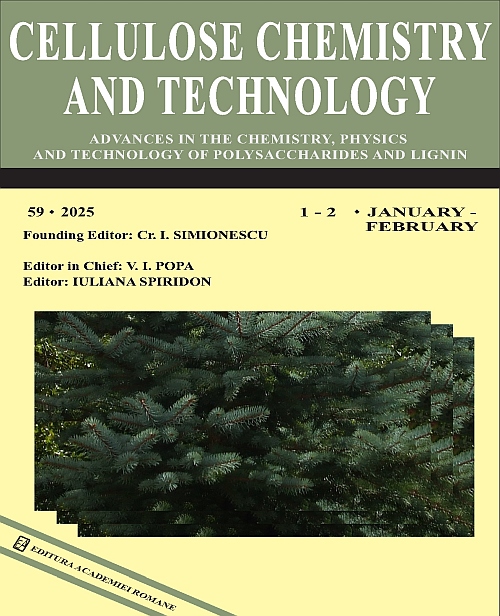|
Title
Synthesis and characterization of novel highly swellable antimicrobial starch hydrogels impregnated with ZnO nanoparticles as edible food coating
Authors
NAHED A. ABD EL-GHANY, NADIA A. MOHAMED and ZAIN M. MAHMOUD
Received
April 14, 2025
Published
Volume 59 Issue 7-8 July-August
Keywords
starch, hydrogels, ZnONPs, synthesis, antimicrobial activity, green peppers preservation, cytotoxicity
Abstract
The growing resistance of microbes towards conventional antibiotics is the driving force for finding out alternative
antimicrobial agents that can work by mechanisms different from that of classical antibiotics. For this, in this study, new
cross‑linked St‑g‑PMPA/PCL hydrogels were prepared via chemical grafting/crosslinking of starch (St) with N-(4
methoxyphenyl)acrylamide (MPA) and different concentrations (3, 5, 10% based on St mass) of
diallyldimethylammonium chloride (CL) using (NH4)2S2O8/NaHSO3 as a redox initiator. This was followed by the
impregnation of zinc oxide nanoparticles (ZnONPs) at 1 and 3 wt% ratios into St‑g‑PMPA/PCL-3%, getting St-g
PMPA/PCL-3%/ZnONPs-1% and St-g-PMPA/PCL-3%/ZnONPs-3% composites, respectively. Various analytical
techniques were employed to confirm the chemical structures of the prepared hydrogels and composites. Their
inhibition performance against the tested microbes can be ordered as follows: St-g-PMPA/PCL-3%/ZnONPs-3% > St
g-PMPA/PCL-3%/ZnONPs-1% > St-g-PMPA/PCL-3% > St-g-PMPA, whereas the virgin St did not show antimicrobial
action. The St-g-PMPA/PCL-3%/ZnONPs-3% composite behaves as a good barrier for the coated green bell peppers,
preserving them from microbial contamination and retarding their spoilage, in comparison with uncoated peppers. The
material was found to be safe for normal human lung fibroblast cells. The incorporation of MPA, CL, and ZnONPs into
St developed its microbial inhibition performance, providing a good approach to produce promising antimicrobial
coating materials.
Link
https://doi.org/10.35812/CelluloseChemTechnol.2025.59.71
|



